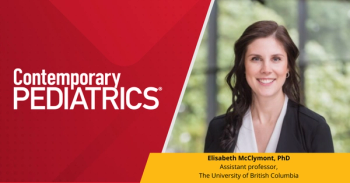
Immune surveillance study reveals drivers of postpandemic viral resurgence in children
Immune surveillance study shows pandemic interventions suppressed viral exposure in children, driving post-COVID resurgence and future outbreak risk.
The first results from a multiyear immunoepidemiologic study, published in The Lancet Infectious Diseases, provide new insights into the dynamics of endemic virus re-emergence in children in the United States following the COVID-19 pandemic. The study, part of the Pandemic Response Repository through Microbial and Immune Surveillance and Epidemiology (PREMISE) program, highlights how disruptions in viral exposure during the pandemic shaped subsequent outbreaks of respiratory pathogens in pediatric populations.1,2
Study design and methods
PREMISE, led by the National Institutes of Health (NIH) Vaccine Research Center, was established to translate immune surveillance data into improved outbreak prediction and development of countermeasures. As proof of principle, investigators conducted a prospective, multicenter, longitudinal study from January 2022 through June 2023 at Children’s Hospital Colorado/University of Colorado Anschutz Medical Campus, University of North Carolina, Weill Cornell Medicine, and the University of Alabama at Birmingham.
Eligible participants included children aged 10 years or younger. Blood specimens were obtained pre- and post–enterovirus season, while respiratory swabs were collected during symptomatic illness. Serological analyses measured antibody binding to a panel of 16 endemic respiratory viruses, including enterovirus D68 (EV-D68), respiratory syncytial virus (RSV), influenza, and SARS-CoV-2.
Findings
Of 488 eligible children, 174 were enrolled with a median age of 3.4 years. Ninety paired serum samples and 73 respiratory swabs were analyzed. Results demonstrated substantial increases in antibody binding and neutralizing titers across all viral pathogens studied, particularly in younger children with low baseline immunity. The highest exposure rates were documented for SARS-CoV-2 (59%), EV-D68 (41%), RSV (41%), and influenza (40%).
Respiratory sequencing identified EV-D68, rhinovirus A, and rhinovirus C as the most frequently detected pathogens. All EV-D68 isolates belonged to clade B3. Importantly, incorporating serological data into predictive models reduced the range of prediction errors for EV-D68 transmission dynamics by 82% compared with models based solely on national case surveillance data.
Impact of pandemic interventions
The study captured immunologic evidence that nonpharmaceutical interventions (NPIs) during COVID-19, such as masking and distancing, resulted in markedly reduced circulation of endemic viruses. This led to an accumulation of susceptible children who later experienced a surge of infections when NPIs were lifted. “The data showed that most younger children lacked immunity to many normal respiratory viruses during the pandemic, suggesting they had not been exposed, as they typically would have, due to prevention measures in place,” the authors reported.
Following the relaxation of NPIs, immunity rose rapidly across pathogens, reflecting the widespread resurgence observed nationally. Lead investigator Kevin Messacar, MD, PhD, professor of pediatrics at the University of Colorado School of Medicine and infectious disease specialist at Children’s Hospital Colorado, noted, “In the future, this type of immune surveillance can be used to better understand the impact of public interventions on population immunity and future waves of disease. PREMISE is a great example of a successful research partnership between NIH scientists and clinical researchers in academia, leading to concrete deliverables such as vaccine candidates and monoclonal antibodies that can directly impact public health.”
Preparing for future outbreaks
The PREMISE program extends beyond monitoring single diseases by building a biorepository of immune data and viral specimens. As lead author Hai Nguyen-Tran, MD, of Children’s Hospital Colorado, explained, “Four cohorts of almost 1000 children have provided an invaluable bank of samples and data. These are being used to develop ‘on the shelf’ medical countermeasures, such as antibody treatments and vaccines, for pathogens of interest. Instead of starting from scratch, this study gives us a head start to understand, predict, and prepare for future pandemics.”
Samples are also being used to identify viral epitopes targeted by natural immunity, aiding in the design of next-generation antibody therapies and vaccines. The study’s predictive models demonstrated the feasibility of combining serological surveillance with epidemiologic modeling to improve forecasts of outbreak timing and intensity.
Conclusion
This initial report from PREMISE establishes proof of concept for immunoepidemiologic surveillance as a tool for outbreak preparedness. By combining immune data with traditional surveillance, the program enhances the precision of predictive models and supports the development of countermeasures. As new pediatric immunizations, including RSV prevention strategies, are introduced, such approaches may help monitor changes in immunity and circulation dynamics across populations.
References
- Novel immunologic surveillance study provides new insights into post-pandemic return of respiratory viruses. News release. Children's Hospital Colorado. August 7, 2025. Accessed August 18, 2025. https://www.eurekalert.org/news-releases/1093905
- Nguyen-Tran H, Park SW, Vogt MR, et al. Dynamics of endemic virus re-emergence in children in the USA following the COVID-19 pandemic (2022-23): a prospective, multicentre, longitudinal, immunoepidemiological surveillance study. Lancet Infect Dis. Published online August 6, 2025. doi:10.1016/S1473-3099(25)00349-4
Newsletter
Access practical, evidence-based guidance to support better care for our youngest patients. Join our email list for the latest clinical updates.








